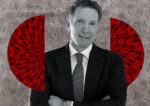Trending
Slip and fall
Is Manhattan’s luxury housing market readying to take a tumble?

For the last few years, New York City’s luxury residential market has been traveling in a singular direction: upward. But there are signs the trend may be reversing.
Top brokers said they’re seeing some skittishness and price sensitivity at the highest reaches of the market. And frenetic building in certain pockets of Manhattan has some brokers concerned that developers could overload the market with luxury condo projects.
Of course, trophy apartments are still trading for astronomical prices: This spring alone saw two $70 million co-op sales (a record that was topped, in October, by an $80 million sale). And during the second quarter, the average price per square foot among the top 10 percent of residential sales in Manhattan hit a new record of $2,735 — a 48 percent spike from five years ago.
Nonetheless, several top brokers warned that if prices climb too high, buyers will revolt and the market will start to cool. Already, some say that sales of “older” luxury condos are considerably slower than they once were. “It’s plateaued,” said Douglas Elliman broker Patti LaRocca, who added that even some under-construction buildings are feeling the reverberations.
But it’s not all doom and gloom. Luxury broker Leonard Steinberg, the president of Urban Compass, said the biggest recent change is a scaling back from the frenzy that dominated the past 18 months. The market “is reverting from an insane market to a strong, steady market,” he said.
Still, sources said if the luxury market starts softening, the rest of the market could follow. Some potential early warning signs:
A dip in the number of luxury contracts signed
“When everyone talks about the market, they talk about the strength and excitement going on, but we are seeing less deals done,” said Kelly Kennedy Mack, president of Corcoran Sunshine Marketing Group, whose data from the second quarter showed a 15 percent drop in signed contracts, compared with a year ago.
According to Mack, the dip reflects a lack of units priced at $5 million or less, a byproduct of skyrocketing land prices that have forced developers to build ultra-luxury properties and compete for the same high-end buyers.
Growing price gap between new condos and resales
Sources expressed some concern about how the widening gap between new condos and resales is exacerbating an imbalance in the market.
The median sales price for resales — some 91 percent of the luxury market — was $4.49 million in the second quarter, up 17 percent from $3.85 million last year. But that didn’t keep pace with median prices in the luxury new development market, which hit $17 million, a stunning 169 percent jump during the same time period.
Luxury inventory overload
Despite the inventory crunch in the overall residential market, the number of luxury properties on the market is starting to rise. According to real estate appraisal firm Miller Samuel, the number of luxury apartments on the market in the third quarter rose 47 percent from last year to 1,626 listings.
The firm’s president, Jonathan Miller, attributed the uptick to new developments hitting the market in more force in recent months, and he predicted inventory would keep edging higher. “I don’t think there’s anybody in the new development space that doesn’t have some concerns about a few years down the road, in terms of having too much product,” he said.
Data from Corcoran Sunshine show a massive number of new units are set to hit the market in the coming months. Mack projected 2,500 new development units would come online by the end of the year, and that 6,000 would hit the market in 2015. That’s a far cry from the 8,000 new development units launched in 2007, but it’s up 151 percent from 2013.
High-end apartments taking longer to sell
While the public perception is that New York City apartments are selling fast, it’s now taking longer to sell high-end residential properties.
The luxury absorption rate — defined by Miller Samuel as the time it would take for all existing inventory to sell out — was 12.5 months during the first and second quarters. That’s significantly higher than the 8.7 months and 10.8 months posted in the final two quarters of last year, respectively.
Listing discounts deepen
Listing discounts — the difference between the listing and closing prices — hit 3.7 percent, on average, in the second quarter, according to Miller Samuel. That means a unit listed for $5 million would end up selling for $4.8 million.
While that discount is far lower than the 8.6 percent off that the market was seeing in the wake of the recession in mid-2009, it’s up from the tiny 0.9 percent discount logged during the first three months of this year.
Kirk Henckels, vice chairman at residential brokerage Stribling & Associates, said that buyers in the $5 million to $15 million resale market have been increasingly price sensitive since last April. “The whole resale market just kind of changed,” he said.




